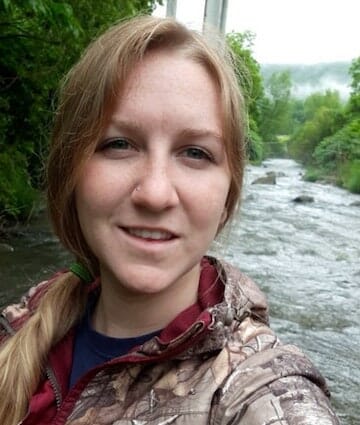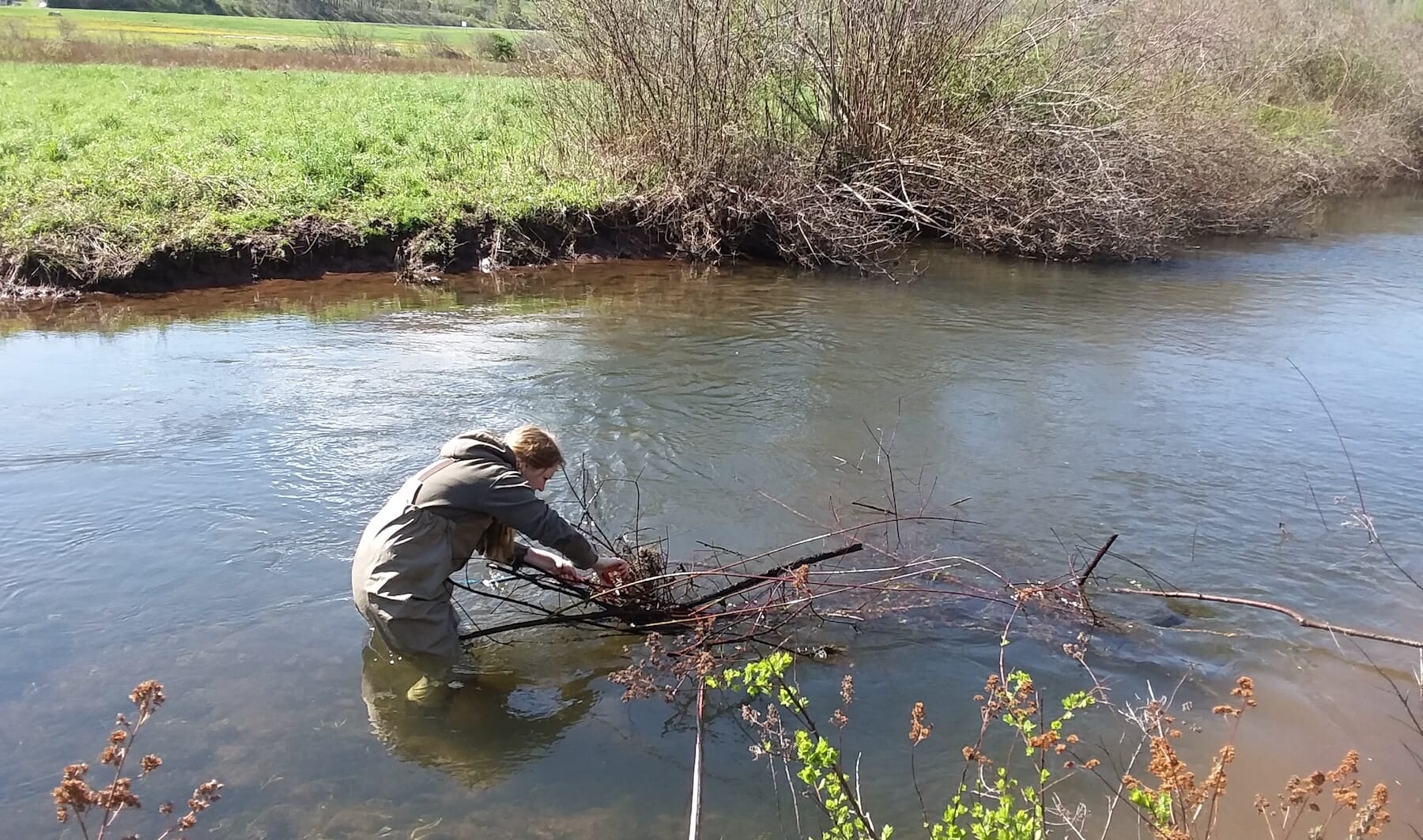By Caroline Shafer
I grew up in a very small town in Upstate New York. At a young age I was introduced to hunting and fishing by my father and grandfather. As I grew up, I realized the importance of conserving our environment and wanted to learn more.
I received my bachelor’s degree in Fisheries and Aquaculture from the State University of New York at Cobleskill. This program allowed me to gain valuable knowledge and important field experience. I have found this work to be rewarding because it allows me to make a difference and do my part to help conserve our environment for future generations to enjoy.
As part of my position with Trout Unlimited, I work closely with the New York State Department of Environmental Conservation in Region 4. This summer I have been working on the East Branch Delaware River Trout Habitat Improvement Project.
This project has many objectives. The ones I have been tasked with involve temperature monitoring, tracking trout movement and assessing road stream crossings.
I have helped members of the Trout Unlimited Ashokan-Pepacton Watershed Chapter install distributed temperature sensing equipment (DTS). This equipment monitors changes in the water temperature and can be used to locate groundwater upwelling.

I have also begun to assess potential impacts of road stream crossings in the Batavia Kill watershed using the North Atlantic Aquatic Connectivity Collaborative protocol (NAACC).
To understand the movement of trout through the watershed, radio frequency identification units (RFID) and passive integrated transponders (PIT tags) are being utilized.
A lot of my time this summer has gone into the installation and maintenance of the RFID units.
Installation of these units involve making antennas, setting up solar panels and programing the unit to detect the tags and record data.
The antennas run perpendicular across the stream bed and then back over the stream creating a loop that the fish must swim through. The antennas then connect to an auto tuner that runs into the unit and is set up to continuously detect PIT tags.
The unit is powered by two 12-volt batteries that are charged by a 100-watt solar panel directly on site.
Maintenance involves going to each site and downloading the data, checking the battery life and ensuring the unit is still correctly functioning on a weekly basis. (For example, in the top photo, debris had tangled in an antenna.)
To track movement through the antenna, trout are tagged with PIT tags, which are inserted into their body cavity. When a tagged trout swims through the RFID antennas, the PIT tag is detected and sends a signal back to the unit.
The signal consists of the unique PIT tag number that the fish has been assigned. The unit stores the tag number, time and date each time a fish passes through. The tagged fish consist of both hatchery and wild trout.
The trout from the Catskill State Hatchery are tagged before they are stocked into the East Branch and its major tributaries. The wild trout are collected using an electro-fishing backpack.
This collection is only conducted in the East Branch tributaries that have RFID units installed in them. By tagging both stocked and wild trout we will be able to better understand the movement and behavior of both.
Combining data from the RFID and DTS units will help to better understand what physical and thermal barriers these trout may face when moving through the watershed.
Caroline Shafer is a New York field technician for the Trout Unlimited’s Northeast Coldwater Habitat Program.



